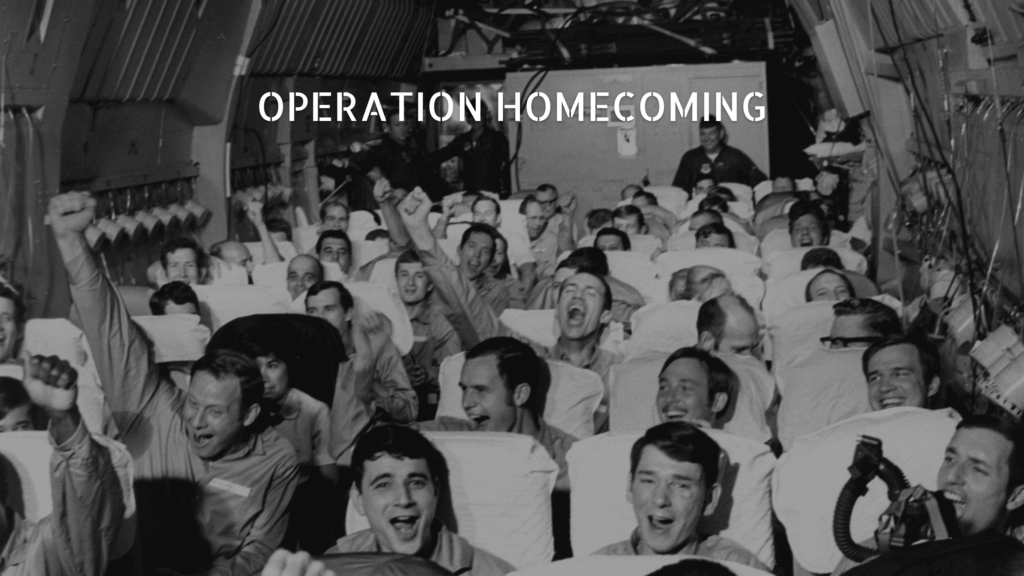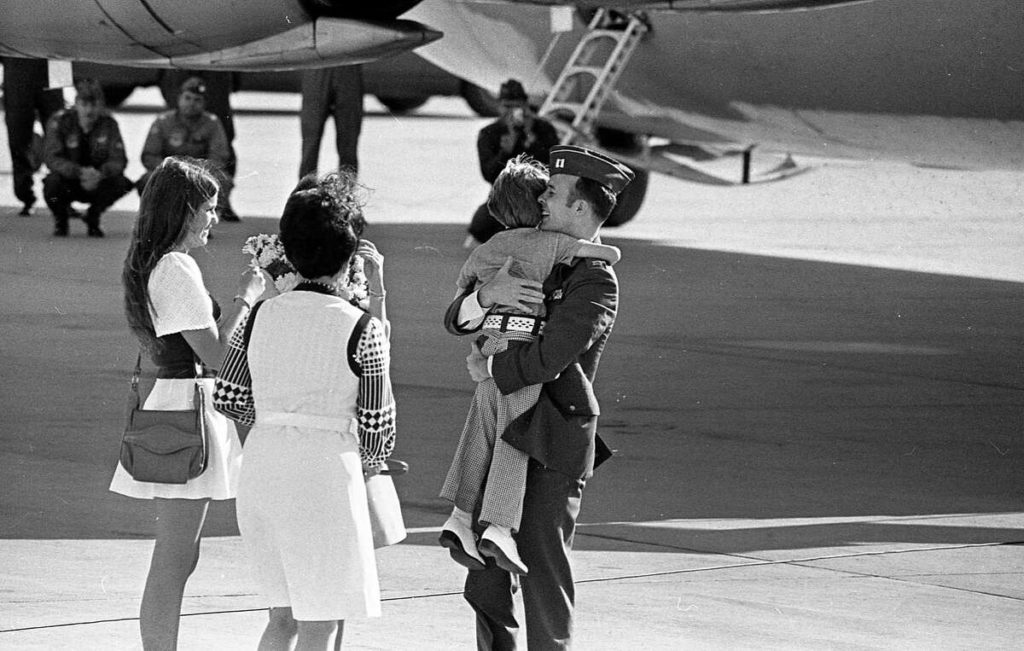Panel Six


In the days following the signing of the Paris Peace Accords, the American prisoners of war (POWs) learned that their release was finally at hand. The men would be freed in two-week intervals. The ill and wounded were the first to be set free; the rest would follow in the order in which they were captured. The longest held being released first. The first flight of liberated POWs left Hanoi on 12 February in a C-141, later nicknamed the “Hanoi Taxi.” Between 12 February and 4 April 1973, the Hanoi Taxi flew 54 Operation HOMECOMING missions.
Of the 591 POWs liberated during Operation Homecoming, 77 served in the Army, 325 in the Air Force, 138 in the Navy; and 26 in the Marine Corps. Twenty-five of the POWs were civilian employees of United States government agencies.
In April 1974, the bodies of 17 American POWs in 17 flag‐draped coffins were repatriated to the United States from the Socialist Republic of Vietnam, with only an honor guard and no formal ceremony, to welcome them home. To this day, the United States still lacks a full accounting of the missing.



